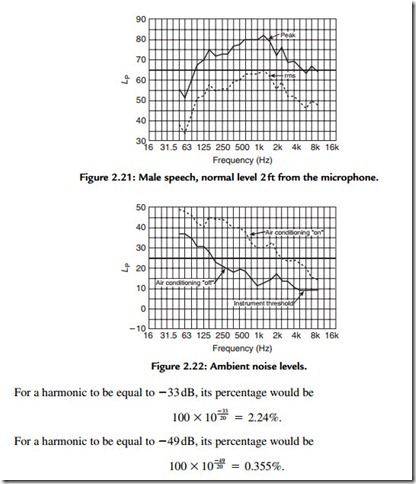Playback Systems in Studios
Assume that a monitor loudspeaker can develop LP = 110 dB at the mixer’s ears and that in an exceptionally quiet studio we reach LP = 18 dB at 2000 Hz (NC-20). We then have
Choosing an Amplifier
As pointed out earlier, the loudspeaker will establish equilibrium around 1% with its acoustic distortion. To the builder of systems, this means that extremely low distortion figures cannot be used within the system as a whole. Therefore systems-oriented amplifier designers have not attempted to extend the bandpass to extreme limits. They know that they must balance bandpass, distortion, noise, and hum against stability with all types of loads, extensions of mean time-before-failure characteristics. Most high-quality sound reinforcement amplifiers incorporate an output transformer, giving us 70 and 25 V and 4, 8, and 16 Ω outputs. In fact, connecting across the 4 and 8 Ω taps yields a 0.69-Ω output.
Example
Let the rms speech value be LP = 65 dB at 2 ft in the 1000- to 2000-Hz octave band (Figure 2.21). Let the ambient noise level be LP = 32 dB with the air conditioning on and 16 dB with the air conditioning off in the same octave band (Figure 2.22). With the air conditioning on the signal to noise ratio (SNR) is


